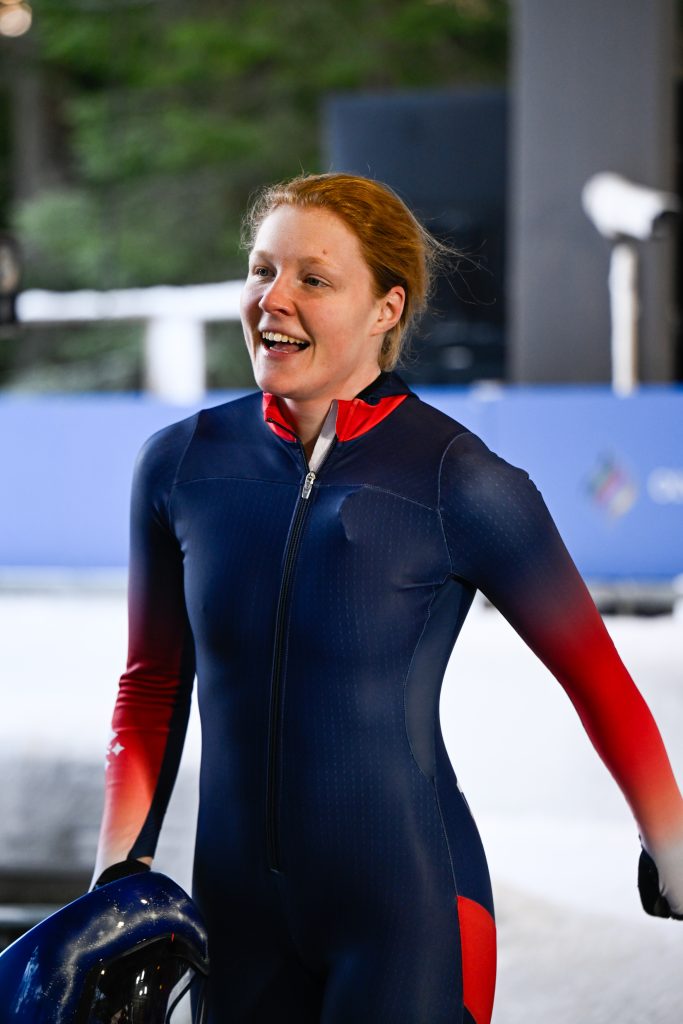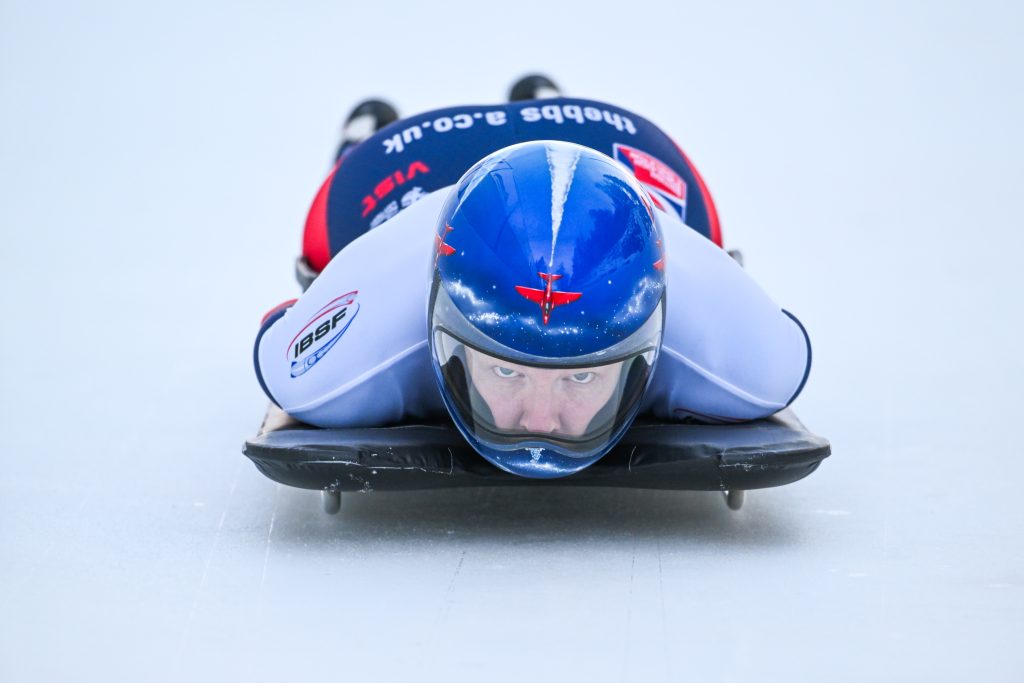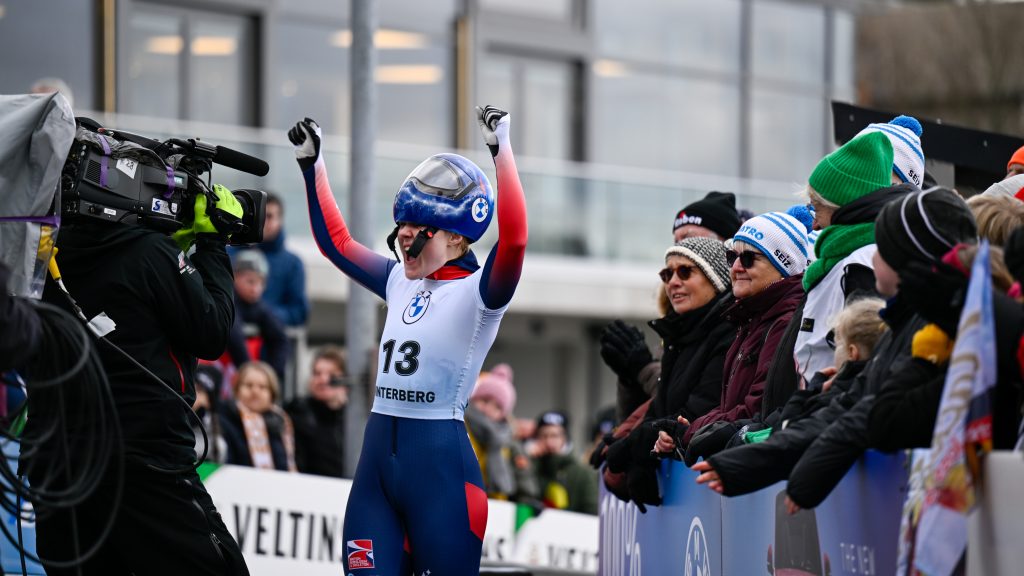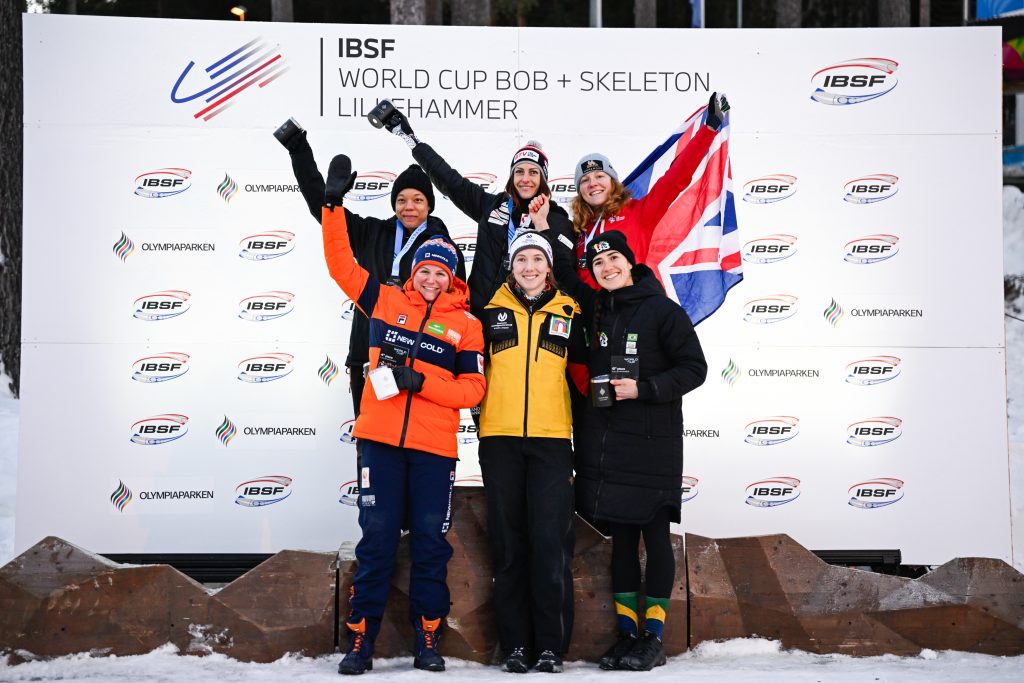When most people think of winter sports, the image of athletes hurling themselves head-first down an icy chute at 130 km/h doesn’t immediately spring to mind. But for 29-year-old Amelia Coltman from Melton Mowbray, that adrenaline-charged ride—known as skeleton—is more than just a sport. It’s a calling.
Currently ranked number one in Britain and with 15 international medals to her name, including a silver at the 2025 European Championships and bronze in 2024, Coltman has carved a remarkable path in one of the world’s most daring disciplines. She’s already made history, helping Great Britain secure its first women’s skeleton medal at the Europeans since 2015—and her sights are now firmly set on gold at the 2026 Winter Olympics in Milano Cortina.

Picture credit: Viesturs Lacis
However, Amelia’s journey into skeleton wasn’t exactly conventional. In fact, she hadn’t even heard of the sport when she stumbled into it at age 20.
“I was at Sheffield Hallam University studying Sport and Exercise Science and I just wanted to improve my
CV,” she tells Pukaar. “So I started volunteering for a UK Sport programme called Discover Your Gold—a talent search across the country. I was actually testing the athletes. But I started thinking, maybe I’ve got potential too…”
Coltman was no stranger to sport. A county champion in high jump and long jump, and a keen hockey player, her early focus had been on racket sports. She’d won national medals in badminton and tennis, including a national mixed doubles title. Her athletic versatility made her a perfect candidate for the skeleton team.

Picture credit: Viesturs Lacis
“I didn’t even know what skeleton was when they mentioned it,” she admits. “They were looking for skeleton athletes, sprint canoeists, and cyclists. My parents were both professional cyclists, so you’d think I’d follow that path—but turns out, I had the genes for skeleton.”
Since being recruited to the GB Skeleton Talent Team in 2017, Coltman has had to develop more than just physical strength.
“Sprinting with a 30kg sled bent over for 30 metres—it takes explosive power,” she says. “But it’s not just about strength. Skeleton is dangerous. You need mental toughness, because when you’re slamming into ice walls at 80mph, it hurts. You’ve got to be able to take a hit, get back to the top, and go again.”
Her personal best top speed? A staggering 138 km/h (86 mph)—not far off the world record of 90 mph.
“You experience 5Gs on some corners,” she explains. “That’s what F1 drivers deal with. At first, it’s terrifying. You’re out of control, and your body has no idea what’s going on.”
But over time, she’s learned to trust the process—and the sled.
“When I have my best runs, I can’t even tell you what I’m thinking. I’m just in that flow state. But if I can tell you what I was thinking, it probably means it was a bad run!”
A skeleton run takes just 60 seconds. But in that minute, every detail counts.
“Mistakes can cost you a medal. You’re steering with your body—shoulders, knees, toes—but it all has to happen while staying aerodynamic. You want to be like a bullet going down the track, but still in control.”
She describes race day as an “out-of-body experience.”

Picture credit: Viesturs Lacis
“It’s like I’m watching myself from above. I have to stay ahead of the sled. If I make a mistake, I’ve already got to be thinking how to fix it two corners ahead.”
That focus has paid off. In addition to her European success, Coltman secured her first individual World Cup gold this year, along with a team gold with fellow Brit Marcus Wyatt. She also finished fourth overall in the World Cup rankings—a feat that reflects consistency and elite performance across eight gruelling races.
Coltman’s road hasn’t been smooth. In the lead-up to the 2022 Beijing Olympics, she suffered three foot surgeries in 18 months—effectively ruling her out of contention.
“That was a tough time,” she says. “I was long-listed for the Games and then everything just fell apart physically. But I’ve come back stronger.”
Ironically, she’s avoided major injuries on the track itself. “Touch wood, I’ve never had a concussion, which is common in skeleton. Most of my injuries came during summer training, just pushing my body to the limit.”
Like many athletes in niche sports, Coltman had to support herself financially in the early years—working at McDonald’s in Bath, coaching, and giving school talks just to make ends meet.
“There’s no guaranteed funding,” she says. “You have to earn it through results. Now I get enough to live on, but it’s still not much. That’s why I work with the Youth Sport Trust as a mentor. It keeps me grounded.”
Now, with the 2026 Winter Olympics just around the corner, Coltman is staying focused.

Picture credit: Viesturs Lacis
“I’ve trained for this for nearly nine years. But I try not to think about it too much. If you want it too badly, it can overwhelm you. I trust the process. I know the work I’ve put in will get me there,” she says.
Her message to young athletes?
“Don’t be afraid to try something new—and it’s never too late. People thought I was crazy starting a new sport at 20, but here I am, on the cusp of the Olympics. All those sports I did growing up made me a more rounded athlete.”
And as for those who still haven’t heard of skeleton?
“Well,” she grins, “once you’ve watched someone go head-first at 138 km/h, you don’t forget it.”





